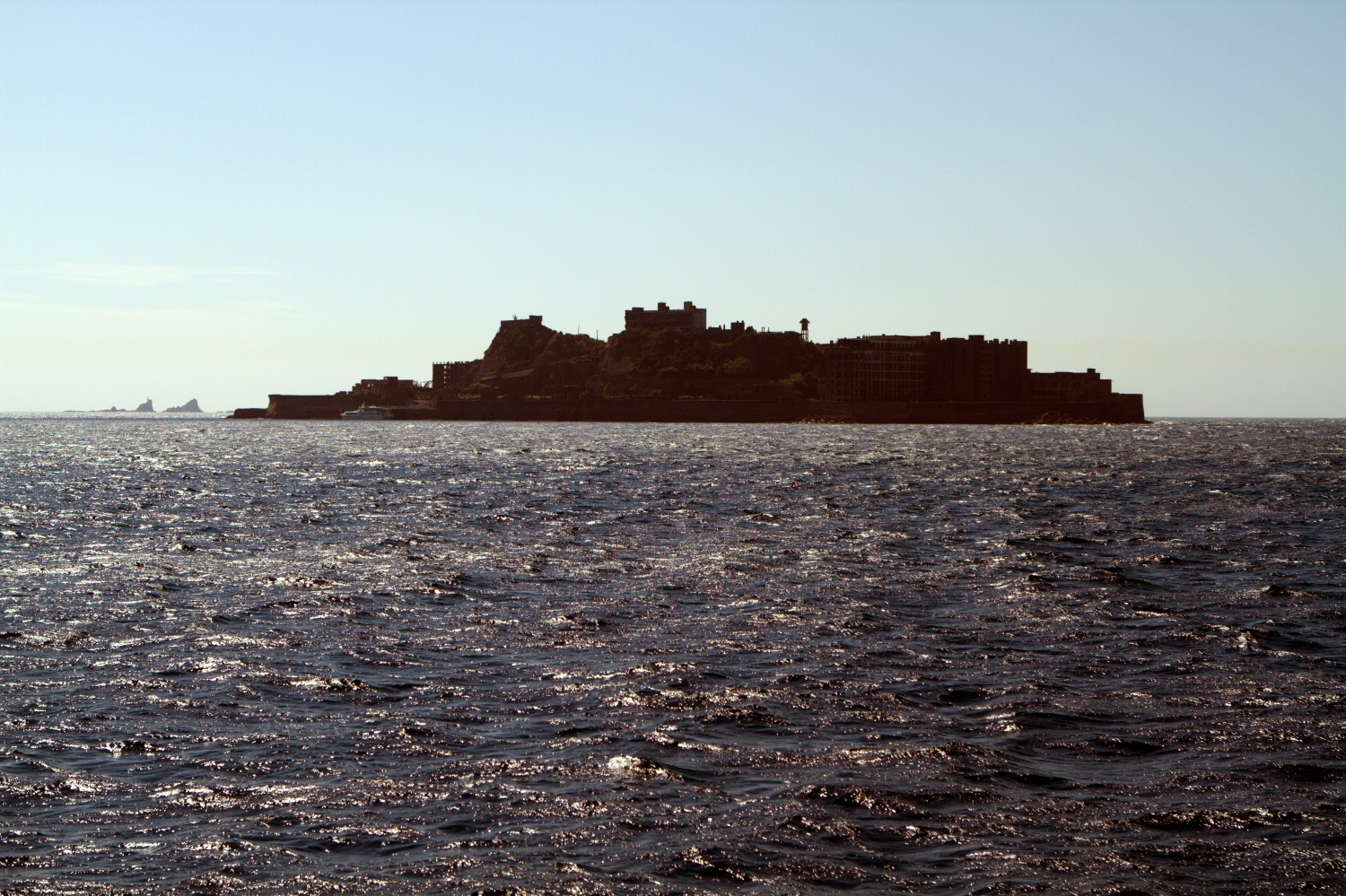
Hashima, also known as Gunkanjima (‘battleship island’ – so named because of its ship-like silhouette), is an island off the coast of Nagasaki in southwest Japan. If you've seen the James Bond movie Skyfall (2012) you may already know this place: that desolate island that was the villain's lair – Hashima provided the inspiration and the aerial shots.
Coal mines operated on Hashima from the 1890s, and at one point in time it was the most densely populated place in the world. At its peak, over 5000 miners lived with their families on an island measuring just over a kilometre long and half as wide, working in mines at depths of up to 660m. When the mine closed there was no reason for anyone to reside here, and in the early 1970s the entire island was abandoned, leaving the structures and contents to rot.
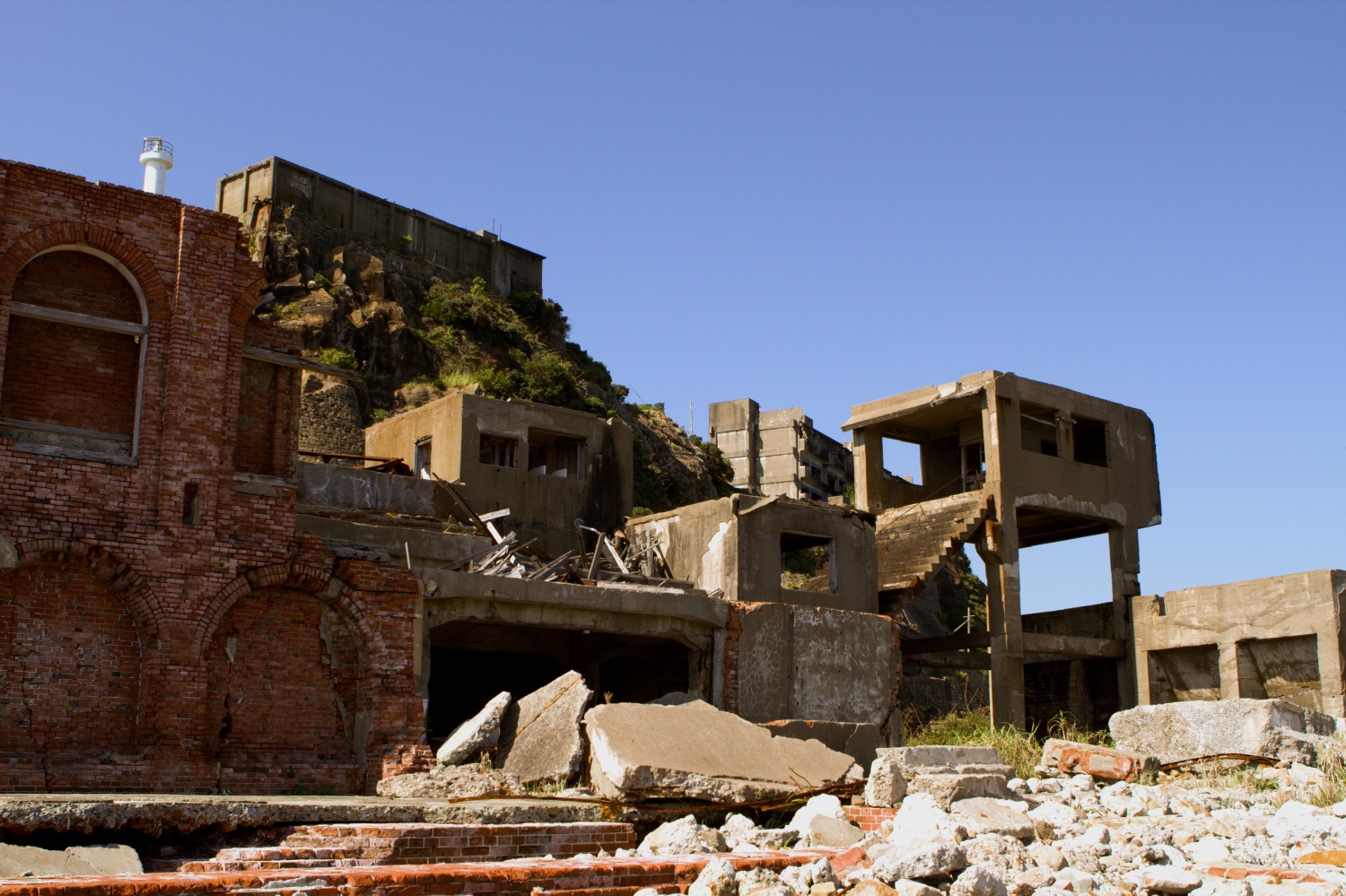
For many years, a plan was in the works to use the island as a rubbish dump – to fill the mine shafts with trash, then pile on refuse until the entire island was buried. Thanks to the work of some advocates for preservation, this plan was abandoned. A few decades on, with grass growing up through the cracks and vines covering collapsing walls, this eerie place has become one of Nagasaki’s major attractions. In July 2015 it was recognised by Unesco among a collection of Japan’s Meiji-era industrial sites.
The days of hiring a fishing vessel to drop you off at the island are long gone: to reach Hashima you must join one of the organised tours that run several times a day, with boats taking about 30 minutes to get to the island from Nagasaki. Stepping off the boat is like entering a dystopian world of sci-fi or video games: giant twisted girders, crumbling brick structures, and shrubbery reclaiming the spaces in which an entire community once thrived.
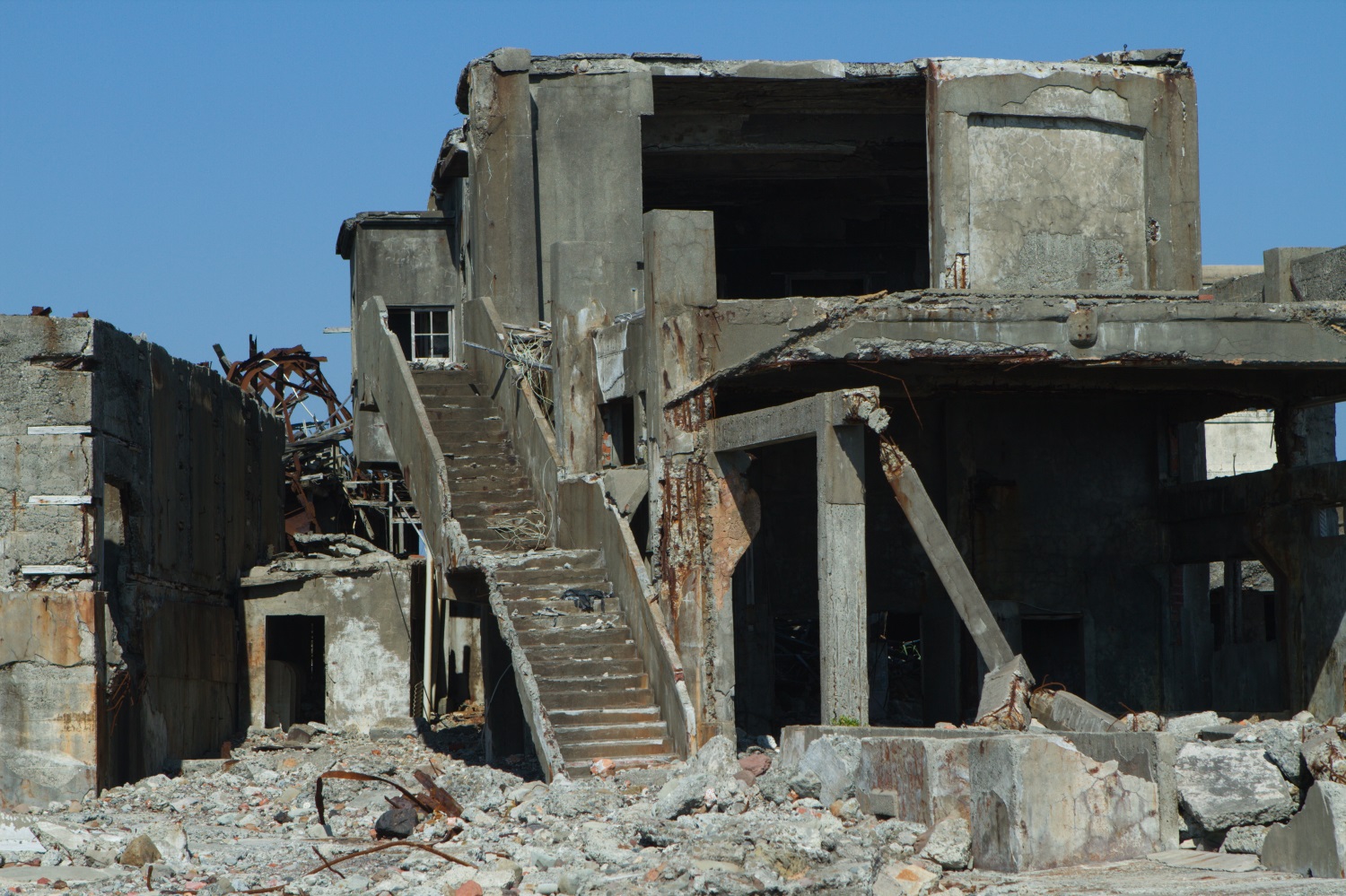
The guided tour takes visitors along a set route on elevated walkways, which pass near a number of the best sites. This may sound disappointing to the more independent explorer, but the restrictions are intended to protect both the tourists (from collapsing buildings) and the ruins themselves.
Several of the iconic images of the island – the unique X-shaped staircases, for example, and the abandoned TV set – are unfortunately not viewable during the one-hour tour due to safety risks. But the tour does pass a number of the key features of the island, including the entrance to one of the mine shafts, and some of the ruined, concrete apartment buildings. There are plenty of great photo opportunities throughout, and the tour guides give interesting insights into the lifestyle and conditions on the island for its former residents.
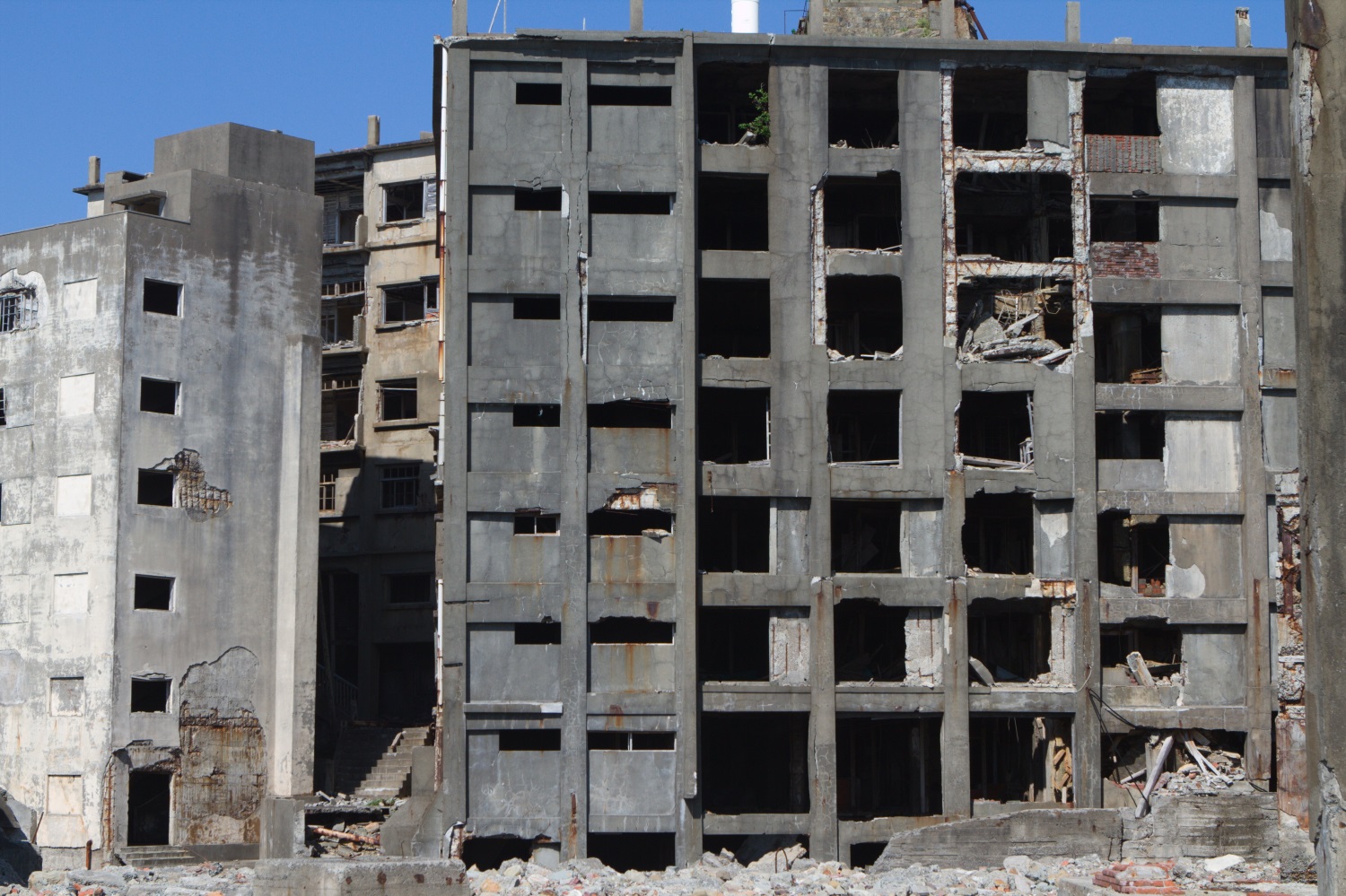
Despite the island’s new status and recognition, it remains a place in peril, with recent storms causing additional structural damage to already unstable buildings. It's possible that future storms may cause further destruction, also affecting what can be viewed by visitors.
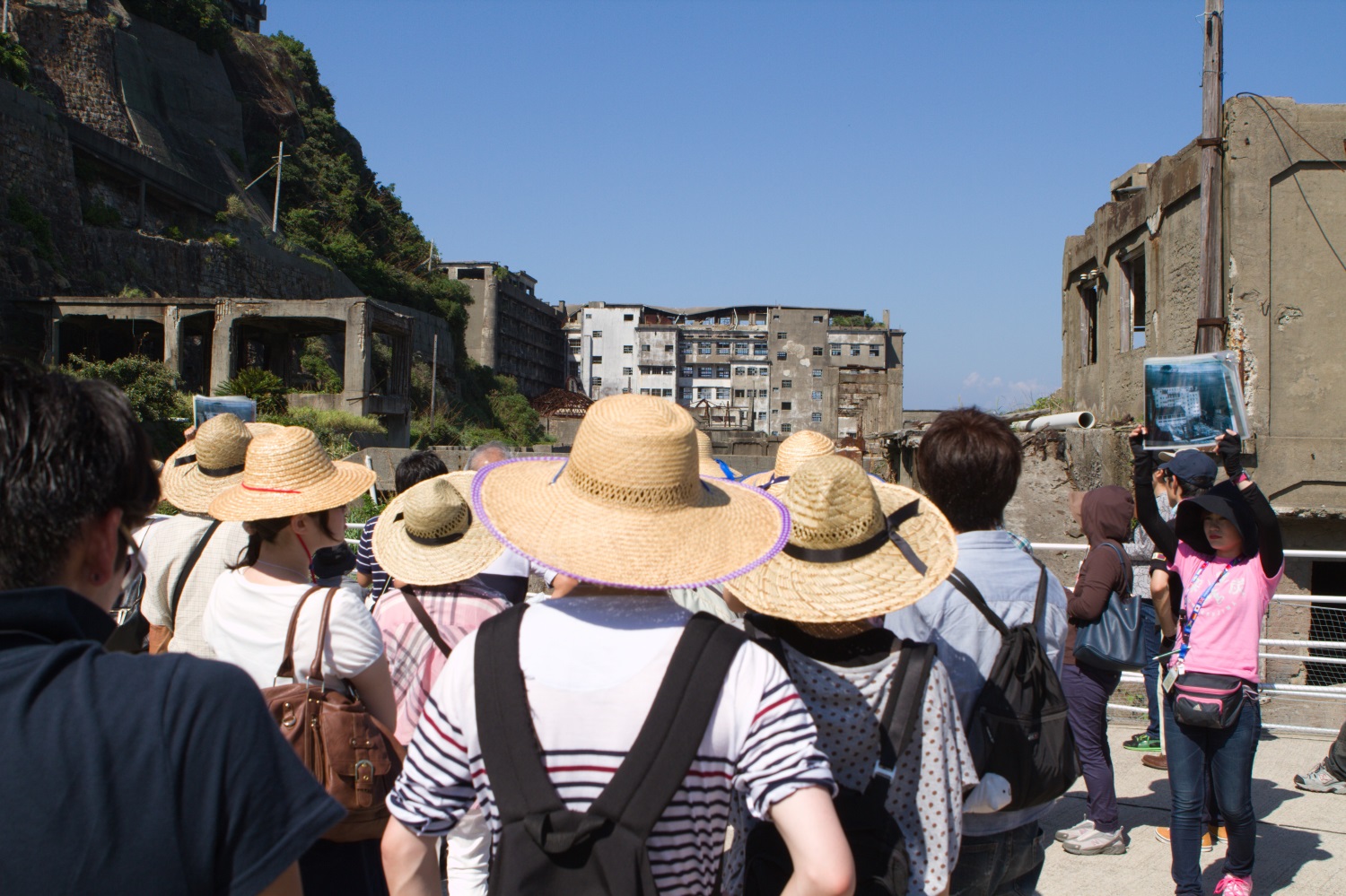
Nagasaki is the closest city to Hashima and is linked to major Japanese hubs by air, or by rail from Fukuoka. Several tour companies take groups to the island from Nagasaki, such as Gunkanjima Concierge, which has multilingual tour guides, though most of the speaking on the way out will be in Japanese. Be sure to take sunscreen and any snacks or beverages; the tour provides loaner sun hats – a good idea, as there is no shade and the sun can be harsh. Note that there are no bathrooms on the island.